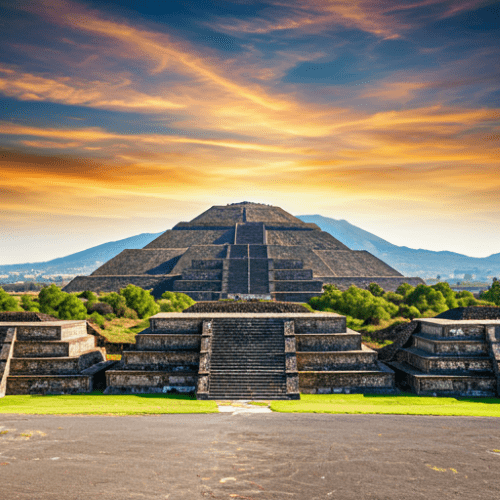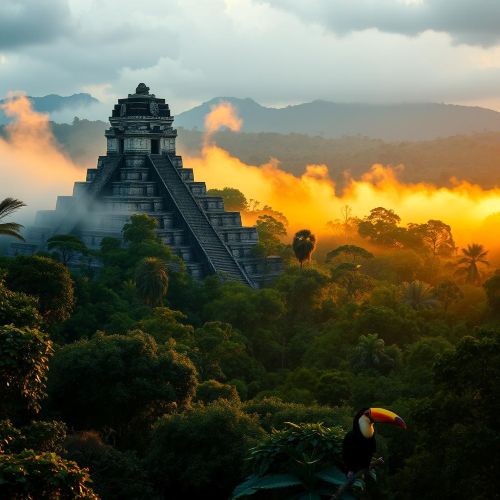Abydos : City of the Dead
At a glance
| Description | |
|---|---|
| Mythology | Egyptian Mythology |
| Country | Egypt |
| Closest airport | Sohag International Airport (HMB) |
| Type | Constructed |
| Accessibility | 10/10 |
Introduction
Abydos, one of Egypt’s most sacred and historically significant cities, lies about 11 kilometers west of the Nile River in Upper Egypt’s Sohag Governorate. Known in ancient Egyptian as Abdju, this city served as both a spiritual center and royal necropolis for over five millennia. It dates back to the Predynastic Period, around 3300 BCE, making it one of the earliest focal points of Egyptian civilization. Renowned for its temples, tombs, and enduring link to the cult of Osiris, Abydos embodies the ancient Egyptian belief in rebirth and divine kingship. Today, it stands as a living monument to the spiritual grandeur that shaped the very foundation of Egypt’s mythological and cultural identity.
Connection with Mythology
Abydos is inseparable from the mythology of Osiris, the god of the afterlife, resurrection, and fertility. According to Egyptian myth, Osiris was murdered and dismembered by his jealous brother Seth, only to be resurrected by his devoted wife Isis, symbolizing the triumph of life over death. Egyptians believed that Abydos was the burial place of Osiris’s head, transforming the city into a spiritual gateway to eternity.
From the 5th Dynasty onward, Abydos became the principal cult center of Osiris, absorbing the worship of earlier deities such as Khentiamentiu, the local god of the necropolis. Pilgrims traveled from across Egypt to participate in the annual festivals of Osiris, which reenacted his death and resurrection. These ceremonies reflected the Egyptian conviction that death was merely a passage to a renewed existence. The sacred Osireion, built behind the Temple of Seti I, was designed to represent Osiris’s tomb and symbolized the underworld journey every soul was believed to undertake. Abydos thus became not only a place of worship but also a destination for eternal connection with divine renewal.
Ways to Get There
Modern travelers can easily reach Abydos as part of their exploration of Upper Egypt’s historical landscape. The site is located near the modern towns of El Araba El Madfuna and El Balyana, approximately 50 miles northwest of Luxor. Visitors often access Abydos via train or road.
Trains from Luxor to Abydos are affordable and comfortable, usually taking two to three hours. Upon arrival, visitors can take authorized taxis—often accompanied by tourist police for safety—to reach the temples. Alternatively, many organized day tours combine visits to Abydos with the nearby Temple of Dendera, creating an immersive experience of Upper Egypt’s spiritual heritage.
For those traveling by car, the drive from Luxor takes around three to four hours, offering scenic views of the Nile Valley and local villages. It’s important to plan visits within daylight hours, as travel in certain areas is regulated between 6:00 AM and 6:00 PM for tourist safety.
What to Look For
Abydos captivates visitors with its astonishing architectural precision, artistic mastery, and historical depth.
The Temple of Seti I, built during the 19th Dynasty (circa 1300 BCE), stands as the crown jewel of Abydos. It was initiated by Pharaoh Seti I and completed by his son, Ramesses II. Unlike other temples, its layout features seven sanctuaries dedicated to major deities—Osiris, Isis, Horus, Amun, Ptah, Re-Horakhty, and Seti himself—each adorned with exquisite bas-reliefs that retain their original color and depth. Inside lies the renowned Abydos King List, an invaluable chronological record of seventy-six pharaohs, from Menes, the first king of a unified Egypt, to Seti’s own father, Ramesses I.
Behind Seti’s temple lies the Osireion, a subterranean chamber constructed with massive granite pillars surrounded by a water-filled trench. Its architectural style is unlike any other in Egypt, leading some scholars to associate it with Osiris’s symbolic tomb and the theme of rebirth. Although partially submerged today due to changes in the water table, the Osireion remains one of the most enigmatic monuments in Egyptian history.
Nearby stands the Temple of Ramesses II, smaller yet richly detailed, depicting scenes of the pharaoh’s victories, including the famous Battle of Kadesh. The Umm el-Qa’ab Necropolis, also known as the “Mother of Pots,” lies close to the temples and contains the tombs of Egypt’s earliest kings, such as Narmer and Aha. Excavations by archaeologist Flinders Petrie in the late 19th century uncovered a wealth of pottery, inscriptions, and grave goods that shed light on Egypt’s formative dynastic era.
Need a place to stay? Book your hotel room now!
Importance in cultural history
Abydos was far more than a religious sanctuary; it was the spiritual nucleus of ancient Egypt. During the Early Dynastic Period, the city served as the burial site for the first kings of a unified Egypt, establishing its role as the cradle of divine kingship. The intertwining of royal power and religious devotion at Abydos reinforced the pharaoh’s divine status as the earthly representative of Osiris.
Throughout millennia, Abydos evolved into a pilgrimage destination for ordinary Egyptians who longed to be spiritually linked with Osiris in the afterlife. Many erected commemorative stelae at the site, inscribed with prayers and dedications. The Book of the Dead even refers to Abydos as “the island of the Just,” a phrase that reflects its centrality in funerary belief.
Archaeological findings here have also expanded modern understanding of Egyptian writing and art. Early tombs have revealed ivory and ebony tablets bearing the names of pre-dynastic rulers—the earliest known examples of hieroglyphic script. The precision and delicacy of the reliefs inside Seti I’s temple mark a high point in Egyptian artistic achievement, blending religious symbolism with architectural harmony.
Culturally, Abydos embodies Egypt’s enduring relationship with memory, death, and rebirth. It stands as a testament to the Egyptian conviction that spiritual continuity transcends mortality. Even today, scholars and spiritual travelers regard Abydos as one of the world’s most profound intersections between myth, history, and faith.
Best time to travel
The best time to visit Abydos is between October and April, when temperatures range from 20°C to 30°C, creating ideal conditions for exploring open-air sites. During these months, Egypt experiences its peak tourist season, and visitors can enjoy guided tours and cultural events without the discomfort of extreme heat.
The summer months—May through September—should be avoided due to soaring desert temperatures that often exceed 40°C. Early morning visits are recommended for a tranquil experience before larger groups arrive, allowing travelers to fully absorb the quiet majesty of the temples and the surrounding desert landscape.
Visiting Abydos during the cooler seasons not only enhances comfort but also brings travelers closer to the timeless rhythm of Egyptian spirituality—a serene communion with a place where gods were believed to walk among kings.
Source
Britannica. (1998, July 19). Abydos | Egypt, Map, History, & Facts. Retrieved from https://www.britannica.com/place/Abydos-ancient-city-Egypt
Egypt Tours Portal. (2025, July 19). Abydos Temple: Egypt’s Sacred Gateway to the Afterlife. Retrieved from https://www.egypttoursportal.com/en-in/abydos-temple/
Egypt Planners. (2024, September 12). Temple of Abydos: Discover Temple of Seti in Egypt. Retrieved from https://egyptplanners.com/temple-of-abydos/
History Hit. (2020, October 31). Abydos – History and Facts. Retrieved from https://www.historyhit.com/locations/abydos/
Madain Project. (2024, October 31). Abydos. Retrieved from https://madainproject.com/abydos
Australian Museum. (2017, December 31). Abydos and its Relics. Retrieved from https://australian.museum/blog/museullaneous/abydos-and-its-relics/
Frequently Asked Questions
Lorem ipsum dolor sit amet, consectetur adipiscing?
Lorem ipsum dolor sit amet, consectetur adipiscing elit. Praesent convallis vestibulum justo, ac tincidunt nunc vehicula quis. Nullam id dolor quis orci malesuada feugiat. Curabitur aliquet libero at urna ullamcorper, ac ultricies nulla dapibus.
Lorem ipsum dolor sit amet, consectetur adipiscing?
Lorem ipsum dolor sit amet, consectetur adipiscing elit. Praesent convallis vestibulum justo, ac tincidunt nunc vehicula quis. Nullam id dolor quis orci malesuada feugiat. Curabitur aliquet libero at urna ullamcorper, ac ultricies nulla dapibus.
Lorem ipsum dolor sit amet, consectetur adipiscing?
Lorem ipsum dolor sit amet, consectetur adipiscing elit. Praesent convallis vestibulum justo, ac tincidunt nunc vehicula quis. Nullam id dolor quis orci malesuada feugiat. Curabitur aliquet libero at urna ullamcorper, ac ultricies nulla dapibus.
Lorem ipsum dolor sit amet, consectetur adipiscing?
Lorem ipsum dolor sit amet, consectetur adipiscing elit. Praesent convallis vestibulum justo, ac tincidunt nunc vehicula quis. Nullam id dolor quis orci malesuada feugiat. Curabitur aliquet libero at urna ullamcorper, ac ultricies nulla dapibus.
Lorem ipsum dolor sit amet, consectetur adipiscing?
Lorem ipsum dolor sit amet, consectetur adipiscing elit. Praesent convallis vestibulum justo, ac tincidunt nunc vehicula quis. Nullam id dolor quis orci malesuada feugiat. Curabitur aliquet libero at urna ullamcorper, ac ultricies nulla dapibus.









